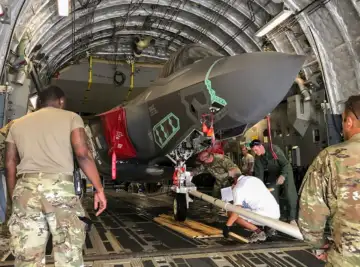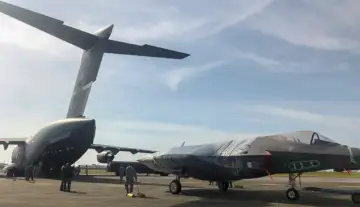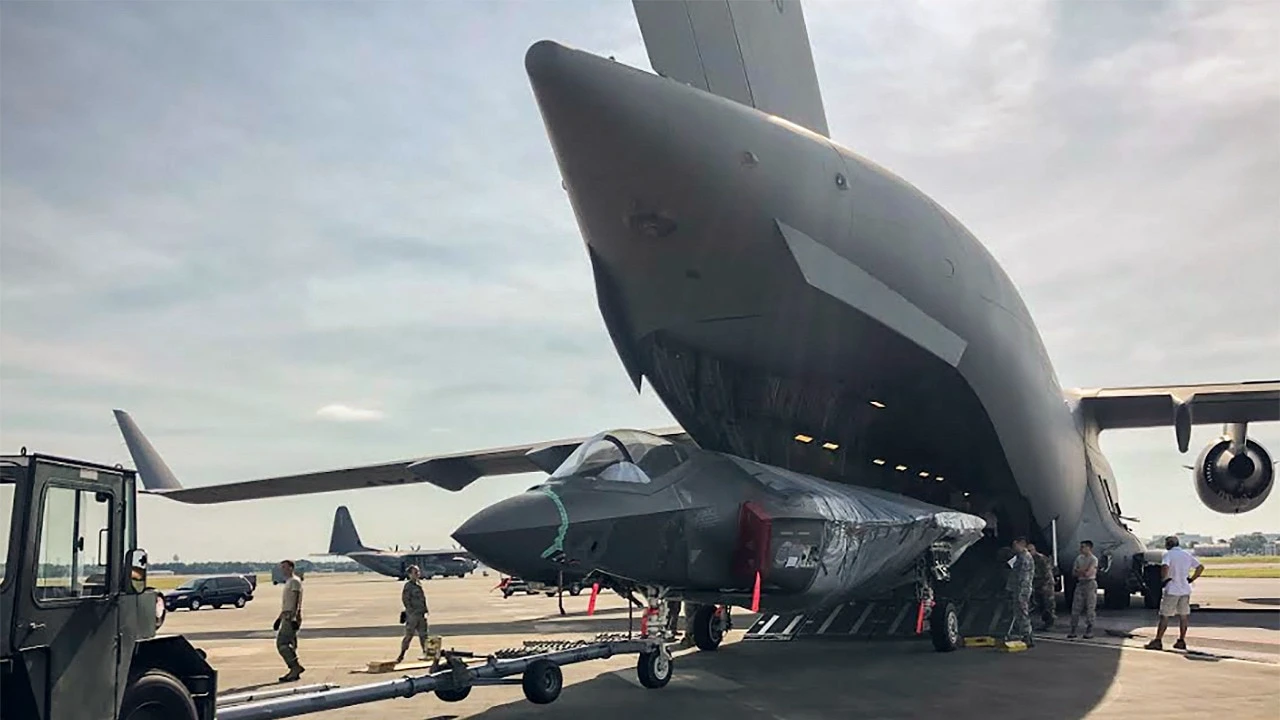“Don’t fix something that ain’t broken,” goes an old saying. But at times one needs to break down things to fix them. And that’s exactly the case with the British Royal Navy’s F-35B stealth jet, grounded at Kerala’s Thiruvananthapuram International Airport since June 14. The fighter jet might have to to the United Kingdom in a military cargo aircraft, said sources.
But fighter jets aren’t your usual DIY Ikea stuff. So how are fighter jets like the F-35 dismantled and transported?
The question has popped up because the British F-35B, a emains stranded in Kerala despite multiple attempts to repair it on-site. Its technical malfunction remains unresolved.
The jet sat exposed to Kerala’s monsoon and under CISF guard, with the British navy first refusing Air India’s hangar offer. Eventually, it was moved indoors.
Sources familiar with the matter confirmed that efforts to restore the aircraft’s flight readiness have so far been unsuccessful.
With no clear timeline for recovery, British officials are now working on alternative plans to retrieve the jet. Partial dismantling has emerged as the most viable option to facilitate its return by military transport.
The incident of a fourth-generation fighter jet remaining stranded for an extended period of time drew global attention, and sparked cheeky social media memes. ,posting on X, “Kerala, the destination you’ll never want to leave. #F35 #Trivandrum #KeralaTourism.”
Here’s how the F-35B jet might be dismantled.
HOW WILL THE F-35 BE DISMANTLED AND TRANSPORTED?
“What we understand now is that the UK plans to fly the F-35B out using a transport aircraft,” said defence expert Sandeep Unnithan.
Unnithan elaborated on how the jet could actually be dismantled.
“The aircraft of choice to transport the F-35B is likely to be the C-17 Globemaster III. The Globemaster is the standard heavy-lift cargo aircraft used by the UK, the US, and the Indian Air Force. It can carry around 77 tonnes and almost two F-35s in its cargo hold. But that’s not where the problem lies. The F-35 is about 14 metres long, with a wingspan of around 11 metres,” Unnithan told India Today Digital.
 USAF technicians load the fuselage of an F-35 fighter jet onto a US military transport aircraft after removing its wings, tail fins, and horizontal stabilisers. (Image: USAF)But dismantling the wings might be necessary.
USAF technicians load the fuselage of an F-35 fighter jet onto a US military transport aircraft after removing its wings, tail fins, and horizontal stabilisers. (Image: USAF)But dismantling the wings might be necessary.
“The C-17’s cargo hold is 26 metres long, but its width is just 4 metres, which means an F-35 cannot be loaded unless the wings are detached. This is likely to happen in the next couple of days. Technicians on the ground will detach the wings and convert the jet into a compact unit that can be rolled into the C-17’s cargo hold for transport,” he explained.
However, this won’t be an easy job.
“It’s not as simple as it sounds. Detaching the wings of this highly advanced fifth-generation stealth aircraft is a very complex procedure. But it seems there’s no other choice,” he said.
 The stripped-down fuselage of an F-35, with its wings, tail fins, and horizontal stabilizers removed, waits to be loaded onto a C-17 Globemaster transport aircraft by USAF technicians. (Image: USAF)WHEN WAS AN F-35 FIGHTER JET DISMANTLED BEFORE?
The stripped-down fuselage of an F-35, with its wings, tail fins, and horizontal stabilizers removed, waits to be loaded onto a C-17 Globemaster transport aircraft by USAF technicians. (Image: USAF)WHEN WAS AN F-35 FIGHTER JET DISMANTLED BEFORE?
If the F-35 fighter jet that is in love with Kerala is dismantled and transported, it won’t be the first time such an option would have been resorted to. The F-35 has undergone wing removal and shipment by air before.
The first documented case occurred in May 2019, when the US Air Force removed the wings of an F-35A at Eglin Air Force Base and transported it via a C-17 Globemaster III to Hill Air Force Base in Utah.
This was done to repurpose the aircraft as a battle-damage repair trainer. It marked the first time an F-35 had ever been disassembled in this way for air transport.
A more recent example took place in South Korea.
A Republic of Korea Air Force F-35A, which suffered a belly landing in 2022, had its wings removed so it could be moved safely by road from Seosan to Cheongju Air Base.
A belly landing, or gear-up landing, is an emergency procedure in which an aircraft touches down without lowering its landing gear. Pilots resort to this only when a mechanical failure or technical issue prevents the landing gear from being deployed.
A South Korean pilot survived a risky belly landing, but the F-35 fighter was left too damaged for combat. A year later, reports said repair costs were nearly as high as buying a new jet, prompting talk of scrapping it. Instead, officials decided to repurpose it as a training model at South Korea’s F-35 maintenance hub.
Transporting it was tricky, so a joint US-South Korea team removed the wings, shipped the jet, and reassembled it on site.
So, when experts talk about dismantling the F-35B for it to be transported by a cargo plane, what they refer to is the removal of its wings so that it can fit in the belly of another aircraft.
